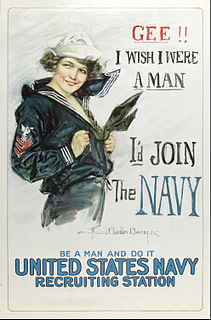Navy enlisted service numbers
Navy enlisted service numbers were slightly more complicated than the officers’ version, with enlisted service numbers being created in 1920 with a range of 1,000,000 to 9,999,999. Originally, there were no Navy enlisted numbers below one million to avoid enlisted personnel having the same service numbers as officers.
Navy enlisted numbers were divided into nine distinct "series" beginning with the one hundred series which was intended for retroactive presentations to those enlisted personnel who had served in World War I and the Spanish–American War. The one hundred series began at number 1,000,001 (written as 100 00 01) and extended to 1,999,999 (199 99 99); this granted the Navy nine hundred ninety nine thousand ninety hundred and ninety nine possible numbers for retroactive presentation. The Navy began issuing such numbers alphabetically through its discharged service records with number 100 00 01 (the first enlisted number) assigned to a sailor named Clayton Aab. [1]
At the same time, the Navy stated that the remaining service number series would be issued to enlisted personnel based on the decade in which they served. Thus, the two hundred series (200 00 01 – 299 99 99) would be held by sailors serving in the 1920s, the three hundred series in the 1930s, and so on. In this way, the Navy felt that this service number system would cover all enlisted personnel to the end of the century.
The retroactive service numbers in the 100 series were issued until the early 1930s when the Navy abandoned the project with several discharged and retired sailors still without 100 series service numbers. The two and three hundred series were being issued as planned, however by the beginning of the 1930s, it was realized that the Navy would quickly run out of service numbers especially if there was ever a major war requiring a vast number of enlistments.
As a solution, the Navy changed the way it issued enlisted service numbers and now provided service numbers from all nine series. Instead of the first number indicating a decade, this number now specified a recruiting district code. By the start of World War II, the Navy was regularly issuing enlisted service numbers from the two through nine hundred series (200 00 01 - 999 99 99) with the first number indicating a recruiting code and the last six a personal identifier. This service number system remained unchanged after World War II and continued through the Korean War and into Vietnam. The Navy also stated that no service number should ever be issued twice; however, with poor communication between recruiting offices, there were ample examples of more than one sailor holding the same service number.
By the outbreak of the Vietnam War, the Navy realized that the enlisted service number system would require an overhaul as new numbers were running out and repeat issuances were becoming more and more common. As a result, the Navy created the "B" series with new enlisted numbers ranging from 10,001 to 99,999. The numbers would be annotated in the format "B12 34 56" with all six numbers a personal identifier. The intent of the Navy was to continue with higher letters of the alphabet upon the exhaustion of all available numbers. This would effectively grant the Navy over two million new service numbers.
The B service number series was issued from 1965 to 1971. In 1969, the Navy further activated a "D series" which reset service numbers to 10,001 to 99,999 (there was never a "C series" created). In 1972, Navy service numbers were discontinued upon the Navy formally abolishing the use of military service numbers in favor of Social Security numbers.








